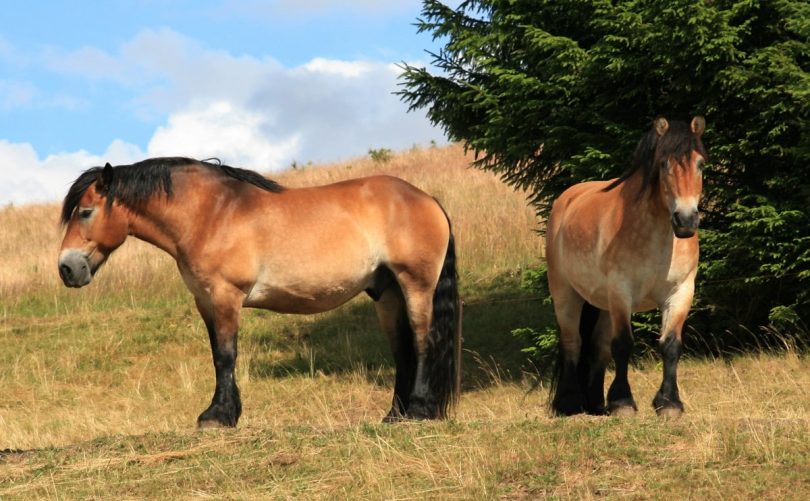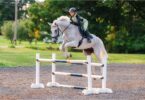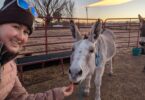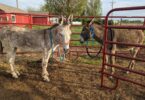Get a leg up on the biggest horse breeds that help you sit tall.
At 5’6, an average height by most accounts, I’m the tallest girl on my dad’s side of the family. Being tall is relative for humans, and the same holds true in the horse world. For tall riders, finding a suitable horse can seem even harder than finding a pair of jeans that doesn’t make them look like they’re wearing capris.
If you’re a “Let me grab that cereal box from the top shelf” equestrian, you’ve probably found yourself flipping through books like the Smithsonian Horse Breed Recognition Guide in search of tall horse breeds.
Draft horses like the Shire, Clydesdale, Belgian, and Percheron are among the tallest horse breeds overall, while Thoroughbreds and Hanoverians are among the tallest non-draft breeds. According to the Guinness Book of World Records, a Belgian named Big Jake is the tallest horse in the world at 20 hands and 2.75 inches tall (82.75 inches).
If you’re shopping for a horse, just remember that height is only one factor of many to consider. You want a horse that suits your body size and also your long-term riding or driving goals.
You may also enjoy our profiles of the 3 Calmest Horse Breeds and 4 Best Horse Breeds for Beginners.
How Horse Height is Measured
Before we dive into the tallest horse breeds, let’s explain how horses are typically measured. You’ve probably heard things like, “My horse is 16.2 hands high,” but what does it mean?
The term “hand” represents four inches (originally the average height of a man’s hand). The number after the decimal is additional inches (in our example 16 hands and 2 inches). So a 16.2hh horse is one that measures 66 inches tall.
Horse height is measured from the ground (stand beside and behind the front leg) to the top of the withers.
This is the most objective measurement since the wither height doesn’t change when a horse raises or lowers its head and neck. Neck and head height isn’t a factor when it comes to a horse’s measurement.
https://www.youtube.com/watch?v=ettprRpg2jA?rel=0
Horse Measuring Tools
If you’re curious about the height of your own horse, or if you’re heading out to look at a potential new horse, you’ll want to have a suitable measurement tool at hand (pun intended).
The most popular tool for calculating horse height is called a measuring stick.
Typically made of aluminum, these sticks are similar to what you find in a human doctor’s office and can be raised/lowered to meet the highest point of measurement.
Some also feature built-in level bubbles to ensure you get the most accurate reading possible.
Tall riders should also check out Kerrits TALL summer breeches at Amazon.
If you don’t have a measuring stick handy, you can use a weight/height tape (this one at Amazon does the job). This is a quick and easy way to estimate height, and the tape is pulled snug from the top of the withers, under the chest (in the girth area), and back up until the ends of the tape meet.
The benefit of using tape is that you can simultaneously get a reading for the horse’s weight–not just height.
Note: Tape will give you a reasonable estimate of height (and weight), but a measuring stick is a more accurate way to measure horse height.
Tall Horse Breeds
Now that you understand how equine height is measured, let’s look at six of the tallest horse breeds that can elevate your ride–literally.
Make sure your horse trailer is tall enough for him to ride in comfortably. Read our article about Horse Trailer Weights by the Numbers for guidance.
If you’re interested in learning more about each different horse breed, check out our blogs about the 3 Calmest Horse Breeds and 4 Best Horse Breeds for Beginners.
Shire

Shire horses typically range from 16.2hh to 19hh.
Known as the world’s largest horse, the Shire Horse originated in England and was bred for pulling heavy loads on the farm and carrying military men in full armor. Their size and strength made these draft horses popular at medieval jousting tournaments.
These massive animals are often confused with Clydesdales because of their feathered legs but come in a wider variety of coat colors including bay, brown, black, grey, and chestnut.
Though you’ll occasionally see a Shire in the
See a Shire stallion in action:
https://www.youtube.com/watch?v=yXSDcY_kt0I?rel=0
Eager to Learn More? Visit the American Shire Horse Association
Clydesdale
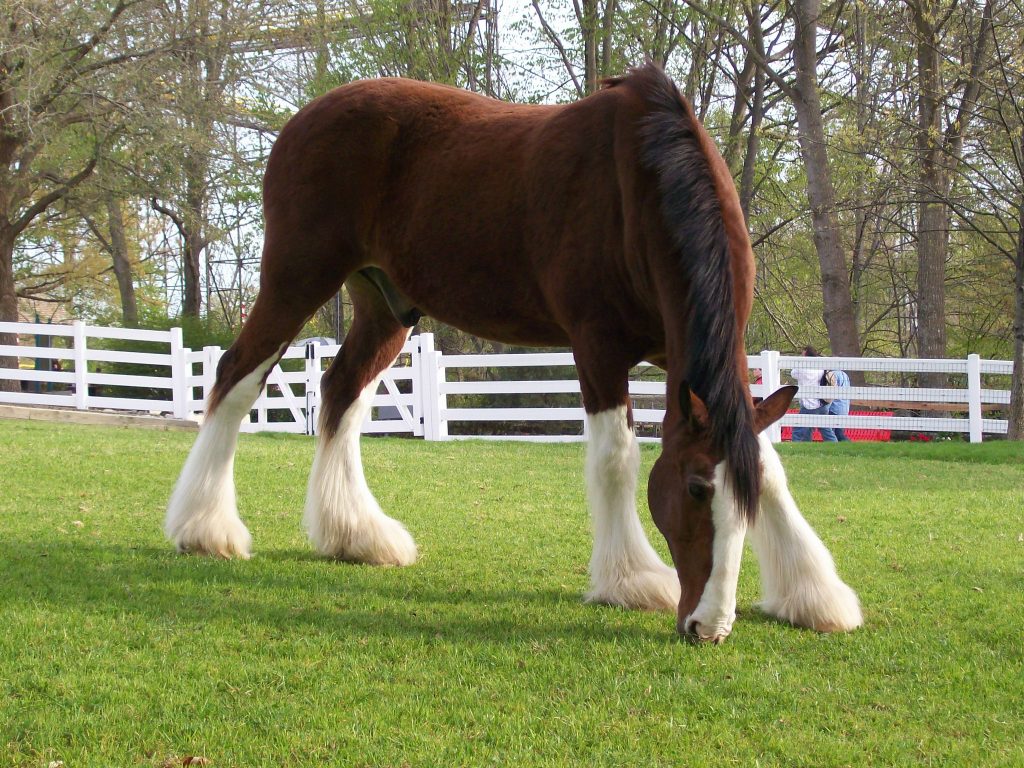
Clydesdale horses typically range from 16hh to 18hh.
Yes, these are the Budweiser horses! Originally from Scotland and bred for agricultural work and pulling heavy loads. Though tall, this typically bay breed is somewhat lighter in build than other draft horses.
Their feathered legs and high-stepping gaits are two of the best known features of the Clydesdale Horse.
In addition to pulling the Budweiser carriage or policing the streets on mounted patrols, you’ll often see Clydesdales in parades where their undeniable presence is a crowd pleaser.
See a Clydesdale stallion in action:
https://www.youtube.com/watch?v=E_hZ9p3Is70?rel=0
Eager to Learn More? Visit the Clydesdale Breeders Association
You may also enjoy our profiles of the 3 Calmest Horse Breeds and 4 Best Horse Breeds for Beginners.
Belgian
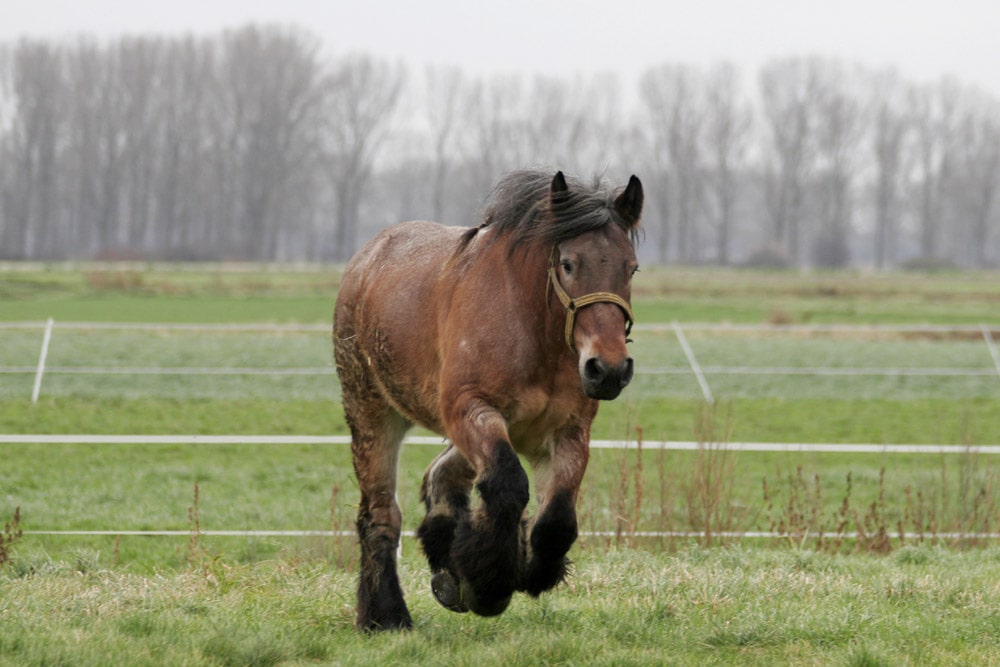
Belgian horses typically range from 16hh to 18hh.
This draft breed, not surprisingly, originated in Belgium. They were bred for agricultural work and are now see in halter and hitch classes, as well as pulling competitions.
Their strong backs, big feet (understatement of the year), heavily muscled mid-sections, and massive hindquarters make this breed a favorite among draft horse enthusiasts.
According to the Belgian Draft Horse Corporation of America, there are more Belgians in the U.S. than all other draft breeds combined. Belgian horses are typically chestnut or sorrel with flaxen manes and tails.
Foals are born weighing about 125 pounds (think about that the next time you hear a woman complain about childbirth) and can weigh more than one ton (2,000 pounds) full grown.
Remember, in the current Guinness Book of World Records, the tallest horse is a Belgian named Big Jake, who measures 20 hands and 2.75 inches barefoot (no shoes).
See a Belgian stallion in action:
https://www.youtube.com/watch?v=ZZY8aSF340k?rel=0
Eager to Learn More? Visit the Belgian Draft Horse Corporation of America
Percheron

Percheron horses typically range from 16hh to 18hh.
The Percheron originated in France and was originally bred as war horses, and then for pulling carriages and agricultural work. Today, the breed is mostly used for forestry work, carriage driving, and occasionally, english riding.
This breed is typically black or grey with little to no white markings, though American Percherons may be registered as roan, bay, or chestnut. They feature lightly feathered legs, wide chests, strong hindquarters, and more refined faces than some of their fellow draft breeds.
Percheron crosses are also becoming more popular as performance horses in
See a Percheron stallion in action:
https://www.youtube.com/watch?v=WMVSoqHxKnI?rel=0
Eager to Learn More? Visit the World Percheron Congress USA
You may also enjoy our profiles of the 11 Best Breeds for First Time Horse Owners.
Thoroughbred
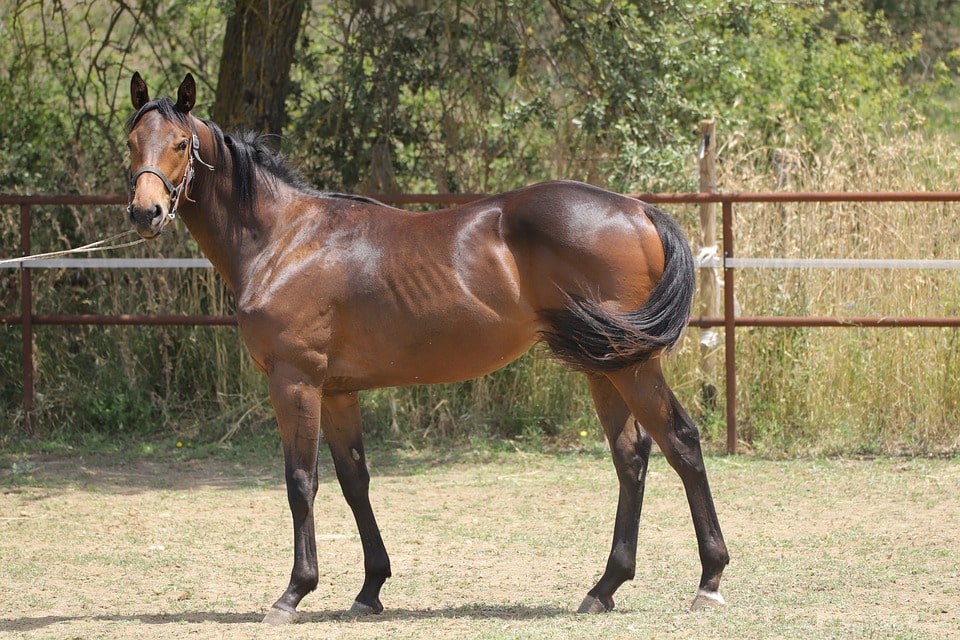
Thoroughbred horses typically range from 15hh to 17hh.
Draft horses aren’t your only options if you’re seeking a tall riding and/or performance horse. Thoroughbreds trend toward the taller side, and you’ll be able to find some in the 17hh range fairly easily.
Originally from England and bred as race horses, Thoroughbreds are now one of the most popular overall athletes in the horse world.
Their ground-covering stride gives them an advantage in timed jumping events and on the cross-country course, and their height increases their scopeyness over jumps.
Unlike the “cold blooded” draft breeds, though, the Thoroughbred Horse tends to run hotter when it comes to temperament.
See a Thoroughbred stallion in action:
Eager to Learn More? Visit The Jockey Club website
Hanoverian
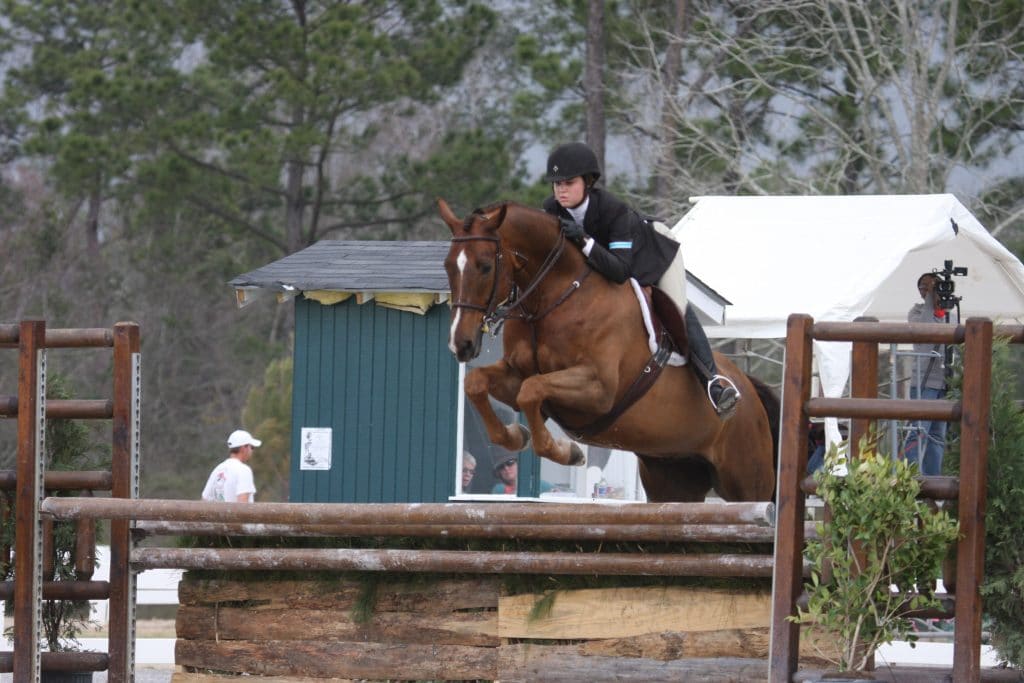
Hanoverian horses typically range from 15hh to 17hh.
This regal warmblood originated in northern Germany and was initially bred as a carriage and military horse.
Today, these natural athletes are bred as true performance horses and excel in
Hanoverians are beloved for their ground-covering and rhythmic gaits, strong work ethic, as well as their beauty and grace.
If you’re looking for a tall drink of water that has the athleticism for upper-level competition, the Hanoverian should be a contender.
See a Hanoverian stallion in action:
https://www.youtube.com/watch?v=D6pH1T_Kq9U?rel=0
Eager to Learn More? Visit the American Hanoverian Society
You may also enjoy our profiles of the 3 Calmest Horse Breeds and 4 Best Horse Breeds for Beginners.
Frequently Asked Questions
Q: What are the best large horse breeds for riding?
- If height is the priority, consider a Thoroughbred. This breed can give tall riders the height they crave without a stouter frame or added heft.
- If a studier body type is desired, but you still want an athlete capable of high-level performance riding, consider a Hanoverian. This breed combines height with a bigger build, but it’s still bred for work under saddle.
- If pure size is the priority, any of the tall horses on our list *can* be ridden. Large draft breeds, like the Shire or Clydesdale, are bred for non-riding purposes like pulling a lot of weight. Be prepared for a less “refined” feeling under saddle than you’d have with a horse bred for gait quality and athleticism.
Q: What is the largest riding horse breed?
As we said above, all draft breeds can be ridden.
Among breeds designed for riding vs. pulling/working, here are some of the largest horse breeds:
- Thoroughbreds (15-17hh)
- Hanoverians (15-17hh)
- Friesians (15-17hh)
Remember, you can also cross a lighter-framed riding horse with a draft and get the best of both worlds. “Half drafts” are becoming increasingly popular in a variety of disciplines for mixing athleticism with friendly temperament.
Q: What are the best horse breeds for tall riders?
Thoroughbreds, Hanoverians, and Warmbloods are among the best breeds for tall riders.
That said, horse size can vary significantly within a single breed — so don’t rule out finding something like a tall Quarter Horse if another breed is more up your alley!
Q: What breed of horse is best for heavy riders?
Depending on the weight of the rider, the best breed will vary.
Warmbloods, draft crosses, Gypsy Vanners, Friesians, and even breeds like Norwegian Fjords can carry most heavyset riders.
Full draft breeds, such as a Belgian horse, Clydesdales, and Percherons may be needed for riders above 200 pounds.
Q: What are “the big horses” called?
When people use this term, they typically mean draft horses. Breeds like Clydesdales, with their impressive height and feathered legs, have been made broadly popular by Anheuser Busch.
Q: Which is bigger Percheron vs Clydesdale?
Percherons and Clydesdales are both typically between 16-18hh.
Q: Are Belgian horses bigger than Clydesdales?
Belgians and Clydesdales are both typically between 16-18hh.
Q: Are Clydesdales good for riding?
While some riders use Clydesdales (and love them!), the breed is not designed to maximize typical riding qualities like movement, suspension, suppleness, stamina, and speed.
If you’re only ambling around trails, go for it. If you want to spot this breed in high-level
Q: Are taller horses faster?
Height doesn’t always equal speed. The length of a horse’s legs has more to do with it. Longer legs tend to make faster horses.
Genetics can also play a factor with speed. For example, with short distances, Quarter horses can outpace Thoroughbreds, thanks to the design of their hind legs.
Skinnier horses are also faster than heavier horses. There’s a fine line with weight, but racehorse owners tend to keep their horses slender for a reason.
Finally, how much heart a horse has can make a difference. A horse who wants to win always seems to find a burst of speed when he needs one.
Q: What is considered tall for a horse?
If you consider that the average height for a horse is between 14.2 and 16.2 hands, then any horse 16.3 hands and above would be considered tall.
Most equestrians will view any horse that’s over 17 hands as tall and horses that are 18 hands and taller (some horses are as tall as 19.2 hands, which is approximately six and a half feet tall) as giants.
Sometimes, what’s considered tall can vary based on breed. A 15.3-hand Arabian may be considered tall, whereas 15.3 hands is normal for Quarter horses. A horse also can feel tall if they’re just not the right size for you.
Q: How big of a rider can a horse carry?
Weight limits vary based on each stable or outfitter, but it’s common to see limits at 200 pounds. If a facility has access to big enough draft horses, you may find a weight limit increased to 225 or 250 pounds.
A general rule of thumb is that the rider and tack should weigh no more than 20% of the horse’s body weight.
Be even more conservative if horses are working in the mountains, being ridden for hours at a time, etc.
Check with the group you’ll be riding with ahead of time to ensure everyone in your party is within the weight limit.
Q: Would a draft horse breed make a good trail horse?
It depends on your goals and the individual horse. If you want to pursue endurance riding or competitive trail class, then breeds like Arabians and Quarter Horses are far more popular. The Arabian Horse are arguably the most popular breed for endurance, as they have incredible stamina and toughness. American Quarter Horses are among the most popular choices for everyday
That said, draft horses (and draft crosses) can be calm and willing trail partners. They are more often seen packing supplies instead of being ridden, as a heavy horse has the heft and strength for the task.
Go Big or Go Home
Height is rarely the most important factor when searching for a horse, but it should be a consideration. If you’re a smaller rider, think about how often you’ll be getting on and off your horse without assistance (e.g. on a trail).
If you’re a taller rider, think about whether your goals are in-hand halter classes or upper level jumping competitions.
Finally, prioritize temperament over appearance.
If you crave a calm, cool, and collected attitude, a lofty draft breed may be a great fit. If you need a tall horse with boundless energy to go cross country, you may want to consider one of the taller non-draft breeds like a Thoroughbred or Hanoverian.
P.S. Enjoy this article? Trot on over to:
- 7 Biggest & Burliest Horse Breeds in the World
- Say Yes to the Horse: 11 Best Breeds for First Time Horse Owners
- 5 Best Horse Breeds for Rugged Mountain Hunting
- Keep Calm & Ride On: 3 Calmest Horse Breeds
- Friendly & Fun: 4 Best Horse Breeds for Beginners
- How much weight can a horse pull? (You’ll be surprised!)
- Horse Markings Quiz: Can You Name Them All?
- Parts of a Horse Quiz: Can You Name Them All?

